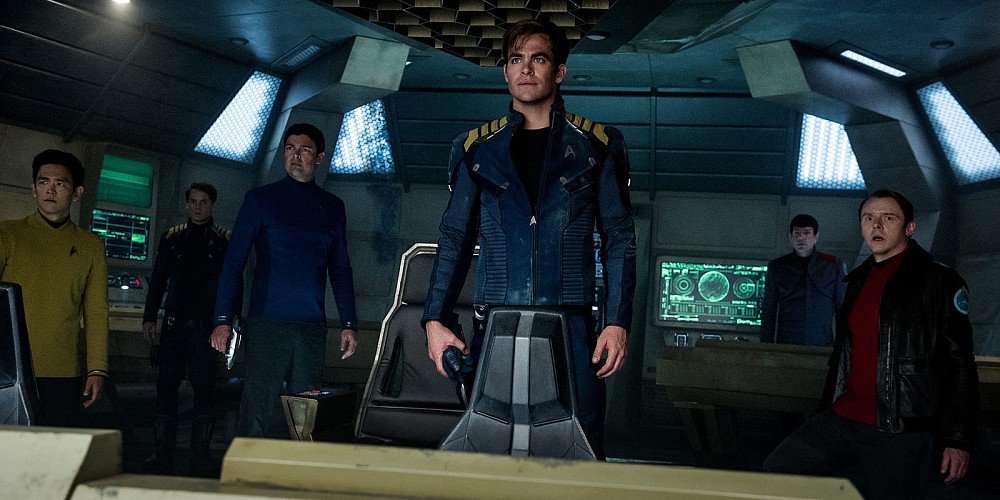Producer J.J. Abram’s rebooted Star Trek series doesn’t seem to care much for hanging out in space. Beyond is the third movie (the first not directed by Abrams) set in the alternate Trek timeline/universe established when a super-villain went back in time to destroy the planet Vulcan, and it’s the third straight movie to depict Starfleet vessels strangely earthbound.
This distaste for exploring the vast vacuum between worlds has, at the beginning of Beyond, infected Captain James T. Kirk (Chris Pine) himself. His opening log entry establishes that after three years leading the U.S.S. Enterprise around the galaxy he’s grown bored with the monotony of shipboard life. He’s put in for a promotion to a desk job at the United Federation of Planets’ shiny new space station, Yorktown. Just as soon as he and his crew deal with one last mission, he’s leaving the ship to Mr. Spock (Zachary Quinto).
The Enterprise is dispatched to help when Kalara (Lydia Wilson), an alien of a previously unknown species, shows up at Yorktown pleading for her shipmates, whom she claims are in trouble on the far side of a dangerous nebula. When Kirk and company arrive there, however, it turns out that they’ve been set up for an ambush by Krall (Idris Elba), who uses his relentless swarm of thousands of scout ships to tear the Enterprise apart as he takes from the ship’s archive an ancient piece of alien tech, the film’s MacGuffin.
Our heroes are forced to crash land separately onto the nearby planet, where they spend most of the rest of the running time finding their way back to one another and unraveling Krall’s motives and ultimate objective.
The screenplay understands that it’s always been the humorous interplay between Trek’s iconic crewmates — particularly Kirk, logical Spock, and crusty Dr. McCoy (Karl Urban) — that is the series’ greatest pleasure. We get plenty too of Simon Pegg’s overtly comic take on ship’s engineer Scotty, and more than even hardcore Trek fans have ever actually desired of Mr. Sulu (John Cho), Chekov (Anton Yelchin), and Uhura (Zoe Saldana).
It’s the mark of a weaker Star Trek film when the final confrontation involves the captain engaging in a fistfight with the bad guy while racing against time to keep some ultimate-device-of-doom-that-will-destroy-everything from going off. The plot is not Beyond’s strong point. The only thing dumber than the “big twist” (which was spoiled in one of the last trailers before release) is the way in which Uhura figures it out.
But there’s enough playful fun between the serviceable action pieces to make the journey worth it. Director Justin Lin does an impressive job moving about in this universe. In particular, Yorktown’s introduction sequence is awe-inspiring, as the camera’s point of view swivels and spins all about the space station. (I wish, however, that I hadn’t been forced to see the movie in useless 3D, which makes it even more difficult to see what’s happening in the many darkly lit early scenes.)
I continue to delight in Pine and Urban’s performances of the roles first made iconic by William Shatner and DeForest Kelley. I continue to dislike Quinto’s take on Spock, which somehow is simultaneously overly emotional and utterly lacking in the wry humor and detached bemusement that Leonard Nimoy communicated in the part. Now that Nimoy has passed — a real-life fact that Beyond uses as a fictional plot point — I’d just as soon Spock die in a freak shuttle accident in the next movie.






